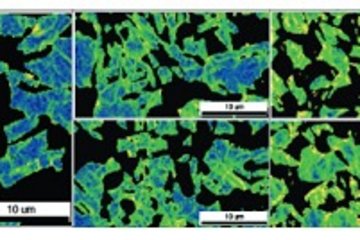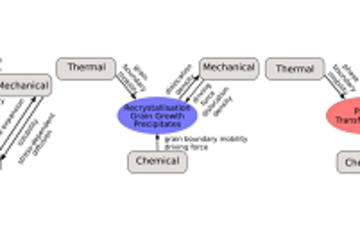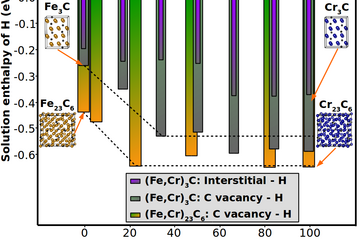All genres
2261.
Poster
Residual Stresses in the Exoskeleton of a Homarus americanus Lobster. 7th European Conference on Residual Stresses (ECRS 7), Berlin, Germany (2006)
2262.
Poster
Slip Interactions Leading to Damage Nucleation in TiAl Grain Boundaries. 3rd International Workshop on - TiAl Technologies, Bamberg, Germany (2006)
2263.
Poster
Chaotic flows in microchannels: A lattice Boltzmann study. The NSTI Nanotechnology Conference 2006, Boston, MA, USA (2006)
2264.
Poster
Off-Stoichiometry of Laves Phases. INPT SAIC INPACT "DewSchool", Bonascre, France (2006)
2265.
Poster
Ab initio study of chemical and structural trends of Ti-based binary alloys. Materials Research Society fall meeting, Boston, MA, USA (2006)
2266.
Poster
Three Dimension Characterization of Electrodeposited Samples. MRS Fall Meeting, Boston, MA, USA (2005)
2267.
Poster
The Nb–Co System: A Case Study on the Nature of Laves Phases. 10th European Conference on Solid State Chemistry (ECSSC 10), Sheffield, UK (2005)
2268.
Poster
Thermomechanical Treatment of a Fe3Al Alloy. Junior DGM-Tag 2005, Hanau, Germany (2005)
2269.
Poster
Structure and texture analysis of chitin-bio-nanocomposites using synchrotron radiation. MRS Spring Meeting, San Francisco, CA, USA (2005)
2270.
Poster
Mesostructure, microstructure and anisotropy of the lobster cuticle. MRS Spring Meeting, San Francisco, CA, USA (2005)
2271.
Poster
Influence of sample preparation and anisotropy on lobster claw studied by LOM, SEM and TEM. Focus on Microscopy, Jena, Germany (2005)
2272.
Poster
3D experimental investigation and crystal plasticity FEM simulation of the texture and microstructure below a nanoindent in a Cu-single crystal. 6th European Symposium on nano-mechanical Testing (Nanomech 6), Hückelhoven, Germany (2005)
2273.
Poster
Deformation Behavior of a Fe3Al Alloy During Thermomechanical Treatment. MRS Fall Meeting, Boston, MA, USA (2004)
2274.
Poster
Orientation dependent growth behaviour of subgrain structures in IF steel. 2nd International Joint Conference on Recrystallization and Grain Growth, Annecy, France (2004)
2275.
Poster
Nucleation Mechanisms of Recrystallization in Warm Rolled Fe3Al Base Alloys. Discussion Meeting on the Development of Innovative Iron Aluminium Alloys, MPIE, Düsseldorf, Germany (2004)
2276.
Poster
Development of a Grain Fragmentation Criterion and its Validation using Crystal Plasticity FEM Simulations. Meeting, Düsseldorf, Germany (2004)
2277.
Teaching
Sustainable Materials Science and Green Metallurgy. Lecture: SS 2024, RWTH Aachen University, 2024-03 - 2024-07
2278.
Teaching
Sustainable Materials Science and Green Metallurgy. Lecture: SS 2023, RWTH Aachen University, 2023-03 - 2023-07
2279.
Teaching
Sustainable Materials Science and Green Metallurgy. Lecture: SS 2022, RWTH Aachen University, 2022-03 - 2022-07
2280.
Teaching
Sustainable Materials Science and Green Metallurgy (Sustainable Materials and Metallurgical Science & Engineering). Lecture: SS 2021, RWTH Aachen University, 2021-04 - 2021-07











